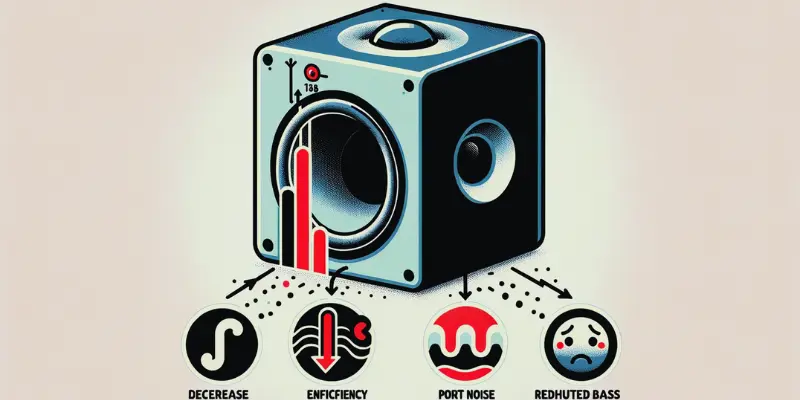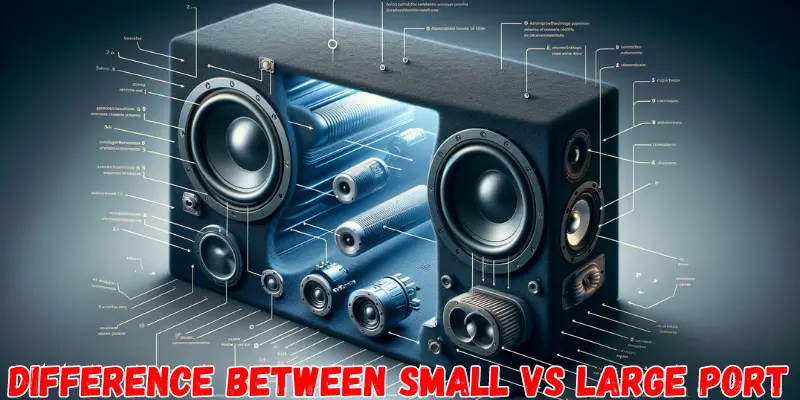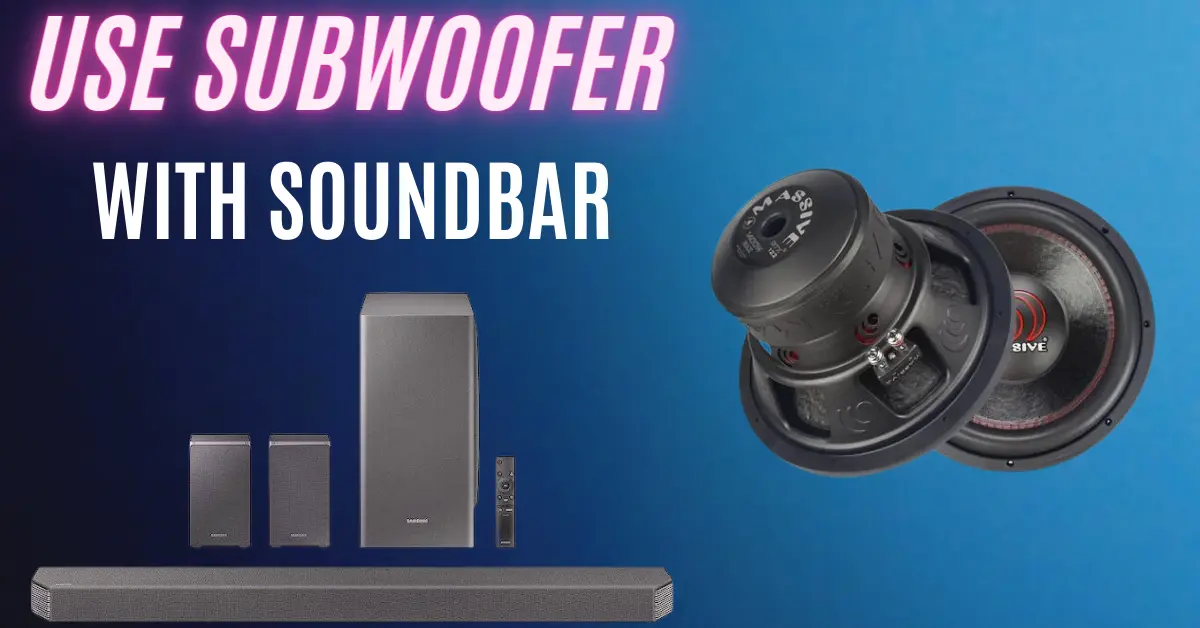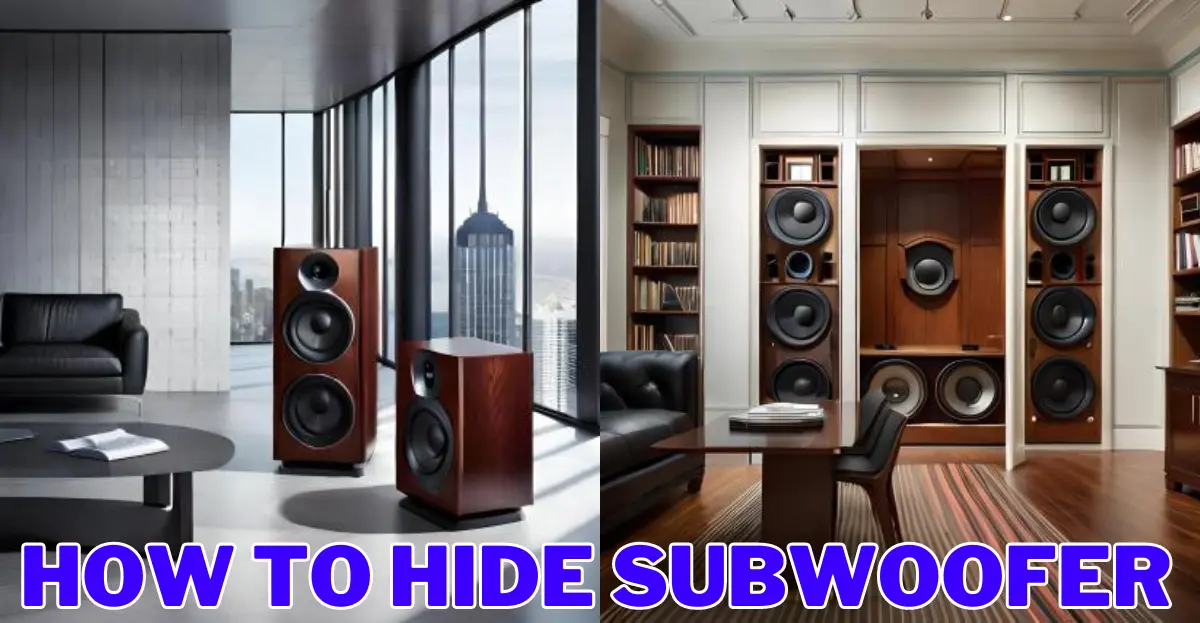
Have you ever wondered why your favorite songs sound better on some speakers than others? A lot of it has to do with a small but crucial part called the subwoofer port.
Subwoofers are the heroes behind the deep, thumping bass that makes music and movies feel alive. But, a common question puzzles many audio enthusiasts and beginners alike: can a subwoofer port be too long?
In this article, we’ll dive into the science of subwoofer ports, their impact on your audio experience, and how the length of these ports can influence the sound quality.
Whether setting up your home theater or tweaking your car’s sound system, understanding subwoofer port length is key to unlocking the best audio performance. So, let’s explore together and ensure your subwoofer hits the right notes.
- The Science Behind: Can a Subwoofer Port be Too Long
- Consequences of an Overly Long Subwoofer Port
- How to Calculate Subwoofer Port Length?
- How to Adjust Subwoofer Port Length?
- Does Subwoofer Port Location Matter?
- Difference Between Small Port Vs Large Port
- Conclusion on Can a Subwoofer Port be Too Long
- FAQs: Can a Subwoofer Port be Too Long
The Science Behind: Can a Subwoofer Port be Too Long

When we dive into the heart of what makes our music and movies sound so immersive, we often find ourselves looking at the humble subwoofer. A key part of its anatomy? The port.
But here’s something that might catch your ear: the length of this port can dramatically affect your audio experience. Let’s break it down in simple terms to understand why and how this happens.
The Relationship Between Port Length, Air Volume, and Resonance Frequency
Think of your subwoofer port as a tunnel. Just like in a long tunnel where you can hear your voice echo, the sound waves in a subwoofer port bounce back and forth.
This bouncing affects how the bass sounds. The length of this tunnel (or port) can change the pitch of the bass, making it deeper or lighter.
This is because the length of the port, along with how much air it can hold (its volume), works together to create what we call the resonance frequency. This is the frequency at which your subwoofer produces the loudest and deepest bass.
How Port Length Affects Sound Output and Performance
If the port is too long, it’s like having a tunnel that’s too echoey. Instead of getting a nice, deep bass, you might end up with a sound that feels weak or distant.
On the other hand, a port that’s just the right length will let your subwoofer hit those deep bass notes perfectly, giving you that powerful sound you love.
It’s all about balance. The perfect port length helps control the movement of air in and out of the subwoofer, ensuring that the bass sounds just right.
If we’re aiming for the best sound output and performance from our subwoofers, we need to pay attention to the port’s length. It’s not just about having a big subwoofer; it’s about having one that’s perfectly tuned to your space and listening preferences.
Whether you’re a casual listener or an audiophile, understanding this aspect of subwoofer design can make all the difference in achieving the audio experience you’re after.
By approaching the concept with a blend of science and simplicity, we’ve uncovered how crucial the length of a subwoofer port is. It’s a fine line between too long and just right, but finding that sweet spot is key to enjoying our music and movies to the fullest.
Consequences of an Overly Long Subwoofer Port

When we talk about optimizing our audio systems, the length of a subwoofer port is a topic that often comes up. You might be curious about how something as simple as the length of a port can have a significant impact on your listening experience. Let’s dive into what happens when a subwoofer port is too long and why it’s crucial to get it just right.
The Impact on Sound Quality
A port that’s too long can introduce several issues, including port noise, reduced efficiency, and a noticeable decline in bass quality. Imagine you’re listening to your favorite track, and instead of the clear, punchy bass you expect, you hear a distorted sound or a “whooshing” noise. This is often due to the air moving through a port that’s too long, causing turbulence and undesirable sound artifacts.
Reduced Efficiency and Bass Quality
Efficiency is key in any audio system. A subwoofer with an overly long port has to work harder to produce the same level of bass as one with an optimally sized port.
This not only puts more strain on your equipment but can also lead to a weaker bass response. The precision and depth of the bass are compromised, making your audio experience less enjoyable.
Expert Opinions and Studies
Experts in the field of acoustics and audio engineering have conducted numerous studies to understand the relationship between port length and subwoofer performance.
These studies confirm that while ports are essential for enhancing the bass, there’s a point where increasing the length does more harm than good. The key is finding a balance that maximizes performance without introducing negative side effects.
In our exploration of subwoofer ports, it’s beneficial to consider the types of ports that best complement your audio setup. I recommend checking out our article on “Best Subwoofer Box Ports for Deep” for a deeper understanding. This piece provides a comprehensive overview of different port designs and their impact on sound quality, helping you make informed decisions about your audio system configuration.
How to Calculate Subwoofer Port Length?

Getting the length of your subwoofer port just right is crucial for achieving the best sound quality. Whether you’re a budding audio enthusiast or looking to fine-tune your home entertainment system, understanding how to calculate the ideal port length is key. Let’s break down the steps and tools you’ll need to ensure your subwoofer sounds its best.
Step-by-Step Guidelines to Calculate Subwoofer Port Length
Know Your Subwoofer’s Specs:
The first step is to gather the specifications of your subwoofer. You’ll need to know the Thiele/Small parameters, which include the speaker’s volume displacement, Fs (resonance frequency), and Vas (equivalent compliance volume). These details are usually provided by the manufacturer.
Determine Your Desired Tuning Frequency:
The tuning frequency is crucial because it influences the type of bass you’ll experience. A lower tuning frequency is great for deep bass, while a higher frequency is suited for more punchy sounds. Consider what you’re looking for in your audio experience to decide on this.
Use a Port Length Calculator:
Here’s where technology comes to our aid. Subwoofer design software and online calculators can take the guesswork out of the equation. By inputting your subwoofer’s specifications and your desired tuning frequency, these tools calculate the ideal port length for you. They consider the air velocity, port diameter, and the box’s internal dimensions to provide a precise measurement.
The Role of Design Software and Calculators
Subwoofer design software and calculators are invaluable resources. They use sophisticated algorithms to analyze your subwoofer’s parameters and the port’s physical characteristics.
This ensures that the port length is optimized for the best possible sound output and performance. Whether you’re designing a port for a car audio system or a home theater, these tools can make the process much easier and more accurate.
Many of these calculators are available online for free, while professional subwoofer design software might come with more features and detailed analyses, catering to more experienced users or specific project needs.
Calculating the perfect subwoofer port length might seem daunting at first, but with the right information and tools, it’s entirely achievable.
By understanding your subwoofer’s specifications, deciding on your preferred tuning frequency, and utilizing a reliable port length calculator, you can enhance your audio system’s bass performance significantly.
How to Adjust Subwoofer Port Length?
Adjusting the length of your subwoofer port can seem like a daunting task, but with the right approach, it’s a rewarding DIY project that can significantly enhance your audio experience.
Whether you’re looking to fine-tune the bass in your home theater or optimize your car’s sound system, here are some practical tips and safety advice to guide you through the process.
Understanding the Basics to Adjust Subwoofer Port Length
Before you start, it’s important to understand that the subwoofer port length is directly tied to the sound quality and performance of your audio system. A well-adjusted port can improve bass response and reduce distortion, making your music and movies sound better.
Step-by-Step Guide to Adjusting Port Length
Safety Tips and Precision
The Importance of Precision
Precision is not just about measuring and cutting accurately; it’s also about understanding the impact of your adjustments on the sound quality. A meticulously adjusted port can transform your audio experience, providing clearer, deeper bass that truly immerses you in your audio.
Adjusting your subwoofer port length is a great way to get hands-on with your audio system and make a tangible improvement to its performance. By following these steps and prioritizing safety and precision, you can achieve professional-quality sound right in your own home or vehicle.
Does Subwoofer Port Location Matter?
When setting up a subwoofer, one question that often arises is whether the location of the port makes a difference in sound quality. The short answer is yes, the location of the subwoofer port can significantly affect your listening experience.
Let’s explore why this is the case and how you can use this knowledge to enhance your audio setup.
The Impact of Port Location on Sound
The port in a subwoofer system is designed to enhance the bass response, allowing for deeper and more resonant bass tones. The location of this port – whether it’s on the front, back, or side of the subwoofer enclosure – influences how the sound waves emitted from the port interact with those from the subwoofer driver and the room itself.
Optimizing Subwoofer Placement for Best Sound
Understanding the role of port location can help you optimize your subwoofer placement:
Yes, the location of the subwoofer port does matter, and it can have a significant impact on your audio experience. By understanding the characteristics of different port locations and taking the time to experiment with subwoofer placement, you can greatly enhance the quality of bass in your home theater or audio system.
Difference Between Small Port Vs Large Port

In the world of subwoofers, the size of the port can significantly influence the sound quality and performance of your audio system. Whether you’re a dedicated audiophile or just someone who loves a good bass in their music, understanding the difference between small and large ports can help you choose or design a subwoofer system that meets your listening preferences.
Let’s dive into the key differences and how they affect your audio experience.
Airflow and Resonance
The primary function of a port in a subwoofer is to enhance the bass by allowing air to move in and out of the enclosure, creating a resonance that amplifies low-frequency sounds. The size of the port plays a crucial role in determining the airflow and the resonance frequency.
Port Length and Tuning Frequency
The size of the port also affects its length for a given tuning frequency. A subwoofer’s tuning frequency is where it is most efficient at producing bass.
Impact on Sound Quality
The choice between a small and large port impacts sound quality in several ways:
Choosing between a small port and a large port depends on your specific needs, the space available, and your listening preferences. For those who prioritize accuracy and have limited space, a small port might be the way to go. If you’re after deep, room-filling bass and have the space to accommodate a larger enclosure, a large port could offer the performance you’re looking for.
Conclusion on Can a Subwoofer Port be Too Long
Throughout this exploration, we’ve unraveled the complexities behind the question, Can a subwoofer port be too long? We’ve seen that the length of a subwoofer port directly influences the quality of sound, affecting everything from bass precision to the overall audio experience.
Achieving the optimal port length is crucial for ensuring your subwoofer performs at its best, delivering deep, rich, and distortion-free bass.
The importance of proper subwoofer port length cannot be overstated. It’s the key to unlocking the full potential of your audio system, allowing you to experience music and movies as they were meant to be heard.
Whether you’re a DIY enthusiast or simply looking to enhance your audio setup, understanding and adjusting your subwoofer port length is a valuable skill.
FAQs: Can a Subwoofer Port be Too Long
What happens if a port is too big?
If a subwoofer port is too big, it may lead to a less controlled bass response, potentially causing the bass to sound boomy or overly resonant. This can detract from the clarity and precision of the audio experience.
What happens if a subwoofer port is too small?
A too-small port can cause airflow restriction, leading to port noise or “chuffing” at higher volumes. It can also limit the subwoofer’s ability to produce the lowest bass frequencies, affecting overall sound quality.
Does it matter where the port is on a subwoofer?
Yes, the port’s location on a subwoofer affects how the bass sounds in your room. Front-firing ports direct sound forward, potentially reducing room interactions, while rear and side-firing ports may enhance bass resonance through wall reflections but can be more affected by room acoustics.
What size port for a 12-inch sub?
The ideal port size for a 12-inch subwoofer depends on various factors including the subwoofer’s specifications, desired tuning frequency, and enclosure volume. Generally, a port diameter of 3 to 4 inches and length tailored to achieve the target tuning frequency is a good starting point.
How does port size affect bass?
Port size influences the velocity of air moving through the port, affecting the subwoofer’s ability to produce clean, distortion-free bass. Larger ports can handle lower frequencies better with less compression and port noise, while smaller ports may provide tighter bass but risk creating noise at high volumes.
What is the maximum size of the port?
The maximum size of a port is dictated by the enclosure’s volume and the subwoofer’s specifications, aiming to prevent port noise while maintaining efficient bass production. There’s no universal maximum size; it’s a balance between achieving the desired bass response and fitting within the physical constraints of the subwoofer box.
Call To Action
We encourage you to share your experiences, questions, or tips about subwoofer ports in the comments below. Your insights can help others in their quest for the perfect sound. Don’t forget to subscribe or follow us for more tips and advice on audio equipment. Together, let’s create the ultimate listening experience for everyone.







